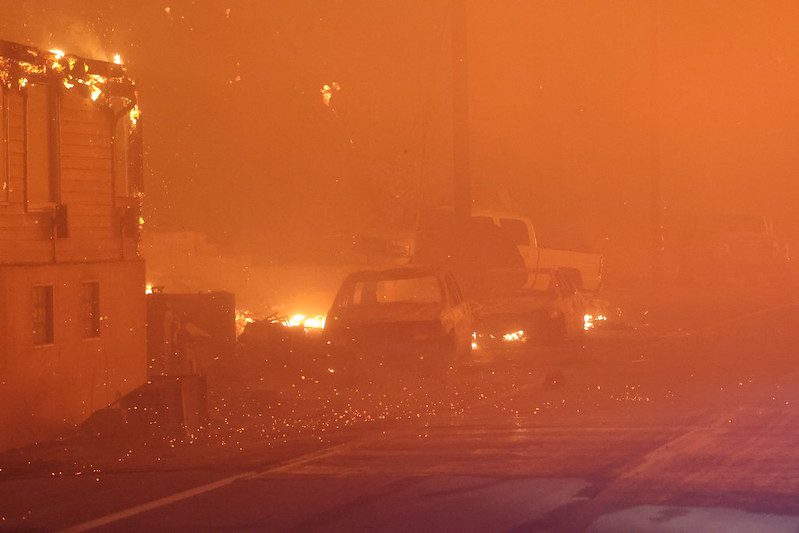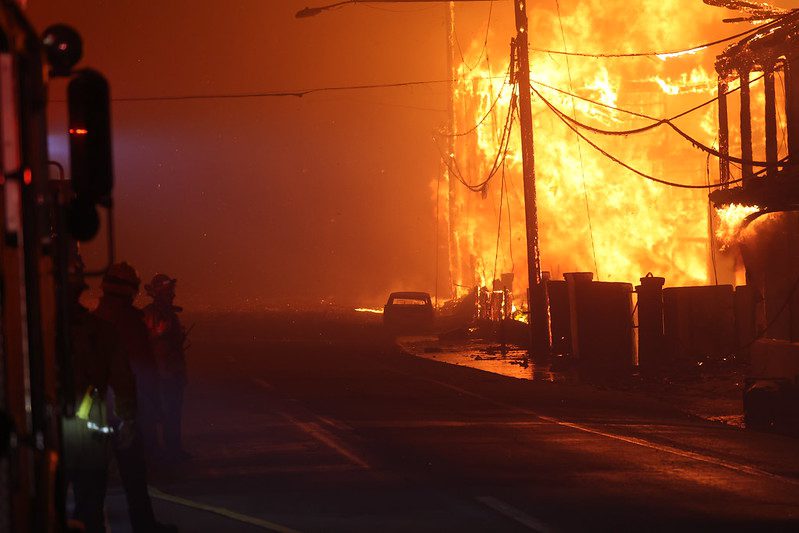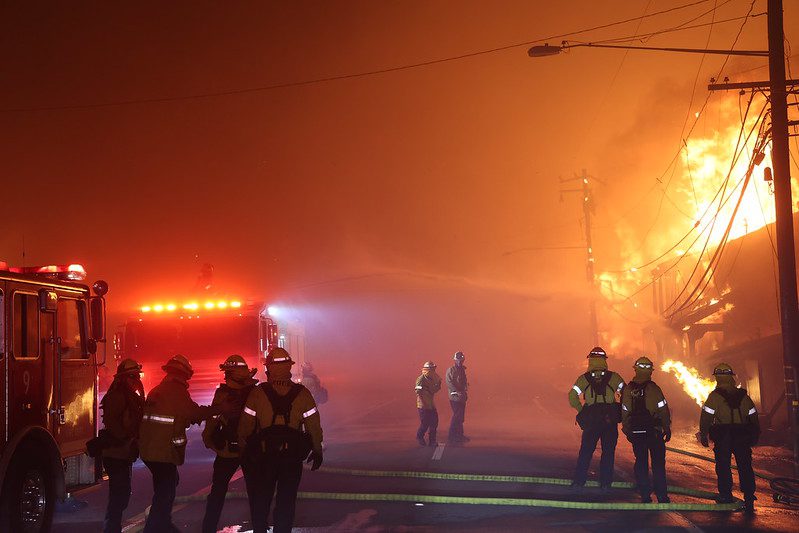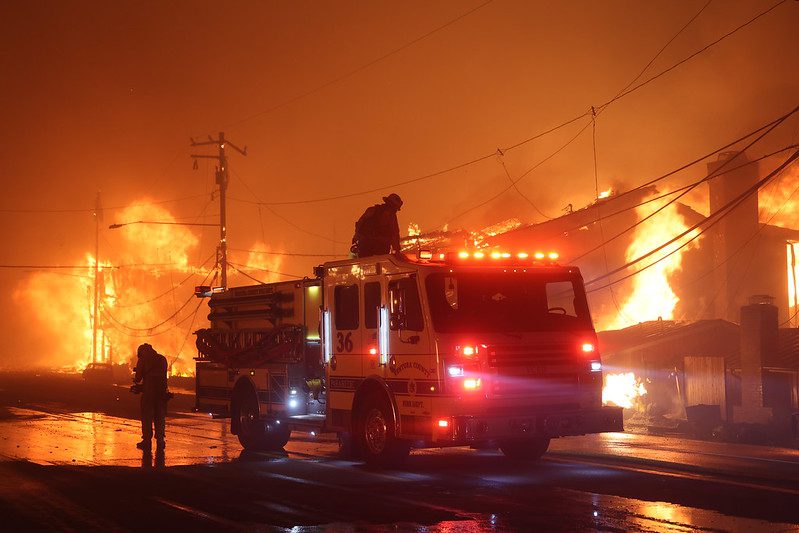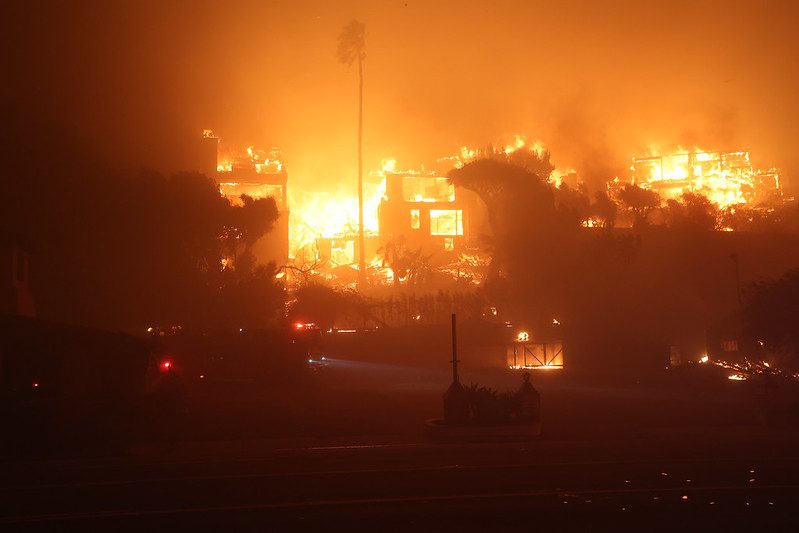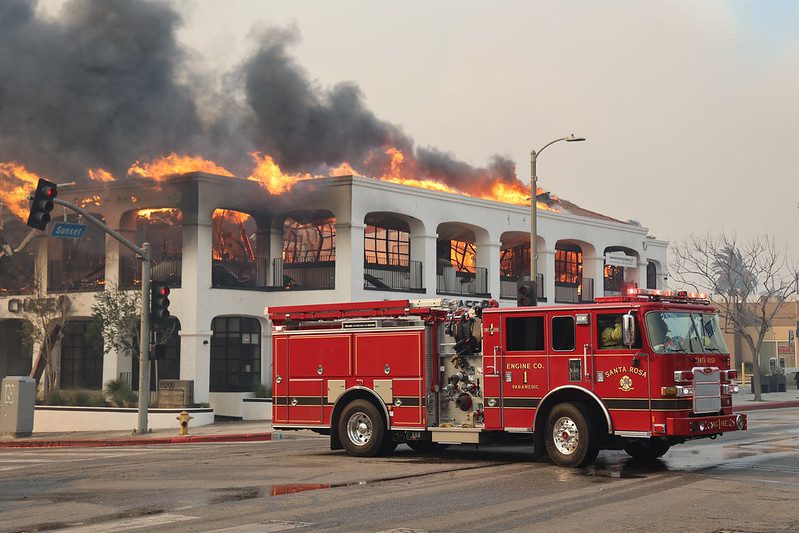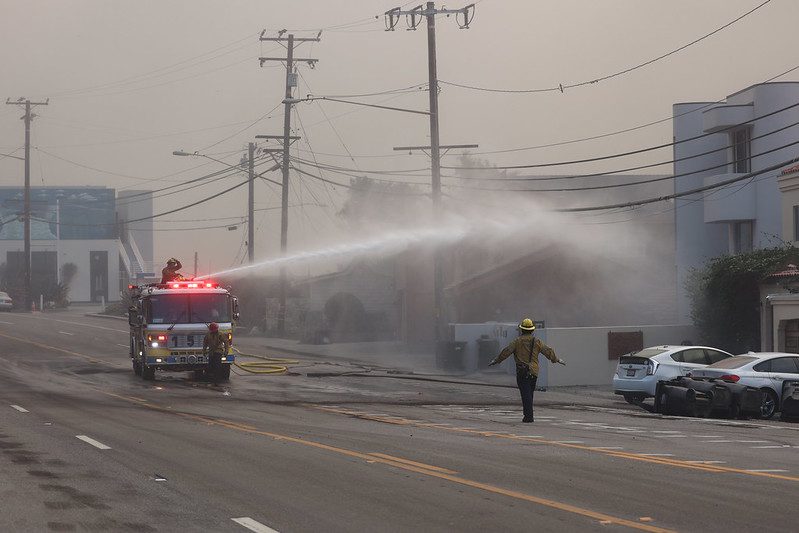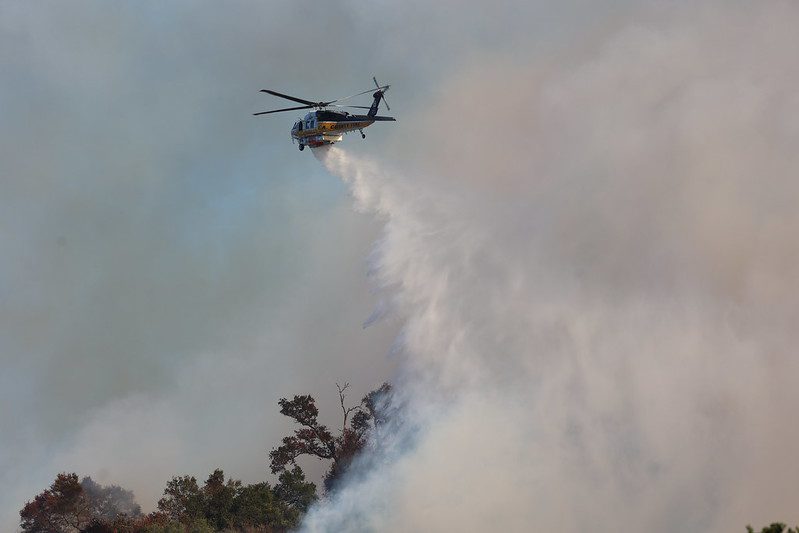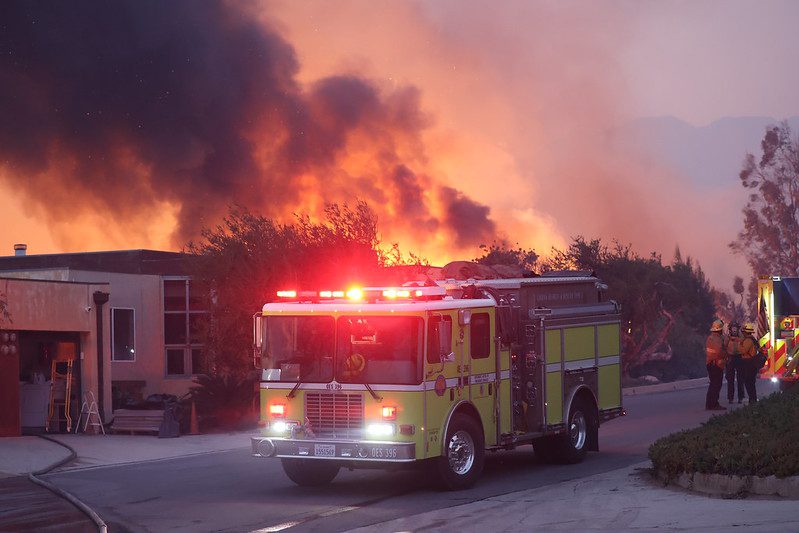As emergency crews depart and the cameras fade, the community must rally to rebuild, hold officials accountable, and navigate the long road to recovery
The stretch of Pacific Coast Highway that runs along Zuma Beach is eerily quiet now. For the last four weeks, it was linedwith rows of fire emergency trucks, a constant reminder of the battle waged against the Palisades Fire. The command center that was set up just days after the start of the fire is all but gone, with only a few personnel left to oversee the final stages of demobilization. The sense of urgency that once filled the air has faded, replaced by the heavy burden of recovery.
The last four weeks have been devastating. The Palisades Fire, following closely on the heels of the Franklin Fire in December, scorched 23,448 acres of land. While Cal Fire reports the blaze as 97% contained, small pockets of smoldering ash still linger in the burn zone, a stark reminder of the destruction left in its wake.
Now, with national media attention shifting elsewhere, the real work begins. Our community faces the daunting task of rebuilding, and it will be up to us to ensure that the promises made by officials and agencies are upheld.
Transitioning from Emergency Response to Recovery
As Cal Fire hands over command of the incident back to the Los Angeles City Fire Department, the focus shifts from firefighting to recovery efforts. Cal OES (California Governor’s Office of Emergency Services) will be overseeing the restoration of services and aiding affected communities.
Residents who were forced to flee their homes are gradually returning as all zones within the City of Los Angeles, Malibu, and unincorporated Los Angeles County have reopened for resident-only access. Entry requires an access pass, available between 10:00 a.m. and 5:00 p.m. at designated check-in points. Verified residents can obtain passes at Malibu City Hall, while contractors and essential personnel must visit the Malibu/Lost Hills Sheriff Substation.
Law enforcement remains stationed at access points to ensure only authorized individuals enter the impacted areas. While evacuation orders have been lifted, movement along Pacific Coast Highway remains restricted, and residents should anticipate delays and temporary road closures due to ongoing recovery efforts.
Hazards and Precautions
Though the flames have been largely extinguished, the dangers are far from over. Smoldering debris, compromised structures, and hazardous materials pose significant risks. The Los Angeles Department of Public Health is distributing personal protective equipment (PPE) to returning residents and providing guidelines on how to safely navigate the burned-out areas.
Residents are urged to exercise caution, especially around charred trees and unstable structures. Additionally, the risk of flash flooding and mudslides remains high, particularly with recent rainfall. Malibu Public Works crews are workingaround the clock to stabilize the area, installing K-rails and sandbags to mitigate potential damage.
Utility restoration is also underway. Southern California Edison and the Los Angeles Department of Water and Power (LADWP) are working to restore electricity and water services, though outages may persist in some areas. Residents can sign up for outage alerts through their utility providers’ websites.
Environmental and Public Health Concerns
The fire has not only destroyed homes and landscapes but has also posed serious environmental risks. Toxic debris from burned structures, melted materials, and fire retardants have seeped into the soil and nearby water sources. As a result, an Ocean Water Closure has been declared from Las Flores State Beach to Santa Monica State Beach due to potential contamination. Beachgoers are advised to avoid both the water and sand in these areas until further notice.
The Los Angeles County Department of Public Health is closely monitoring air quality, soil conditions, and water safety. A virtual town hall is scheduled for Friday, Jan. 31, at 6:00 p.m. to provide updates on these concerns and to guide residents through safe cleanup practices. Experts will be available to answer questions and offer recommendations for mitigating health risks associated with fire debris.
Resources for Affected Residents and Businesses
For those who have lost their homes, businesses, or possessions, recovery assistance is available. The Boys & Girls Club of Malibu is hosting a Disaster Recovery Center at their Third Space location in the Cross Creek Shopping Center. The center provides access to county resources, as well as representatives from FEMA and the SBA who are available to assist residents. Additionally, the center offers a fully stocked recovery store with essential items for fire victims, including clothing, shoes, baby diapers, and Pack ‘n Plays. Local resident Barbie Herron, who experienced a similar loss, has also created a step-by-step rebuilding binder to help guide those navigating the recovery process.
The LA County Disaster Recovery Center, located at UCLA Research Park, is open daily from 9:00 a.m. to 8:00 p.m. Here, residents can connect with aid organizations, insurance representatives, and government agencies offering financial and logistical support.
Small businesses affected by the fire are also receiving assistance. Weekly webinars, beginning Jan. 31, will provide guidance on available funding and support programs through the Small Business Administration (SBA) and other recovery initiatives. Business owners can register online to participate in these sessions.
Holding Officials Accountable
As the dust settles, our community must remain vigilant. In the coming months, promises made by government agencies and public officials must be followed through. Funding for rebuilding, infrastructure repairs, and long-term fire prevention strategies must be secured and allocated efficiently.
Historically, once the immediate crisis ends, bureaucratic red tape can slow the recovery process. This time, we cannot afford to let that happen. Community meetings, petitions, and continued media attention will be crucial in ensuring that aid is distributed fairly and that rebuilding efforts are not neglected.
The road to recovery will be long, but the resilience of our community is strong. Local volunteers, nonprofit organizations, and businesses are already stepping up to assist those in need. Whether it’s offering temporary housing, providing meals, or donating supplies, every effort counts.
This fire has left scars—on our land, our homes, and our hearts. But it has also reminded us of our strength, our unity, and our unwavering commitment to one another. Together, we will rebuild. Together, we will heal. And together, we will hold those in power accountable for ensuring that the promises made in our time of need are kept.
How to Get Involved
For those looking to support recovery efforts, here are ways to help:
- Donate: Contribute to local relief funds that directly support affected families and businesses.
- Volunteer: Join cleanup crews and support groups assisting residents in need.
- Stay Informed: Attend town halls, sign petitions, and advocate for responsible recovery efforts.
- Shop and Eat Local: Support businesses impacted by the fires by shopping and eating locally and spreading awareness.
Together, our community can rise from this tragedy stronger and more united than ever before.
